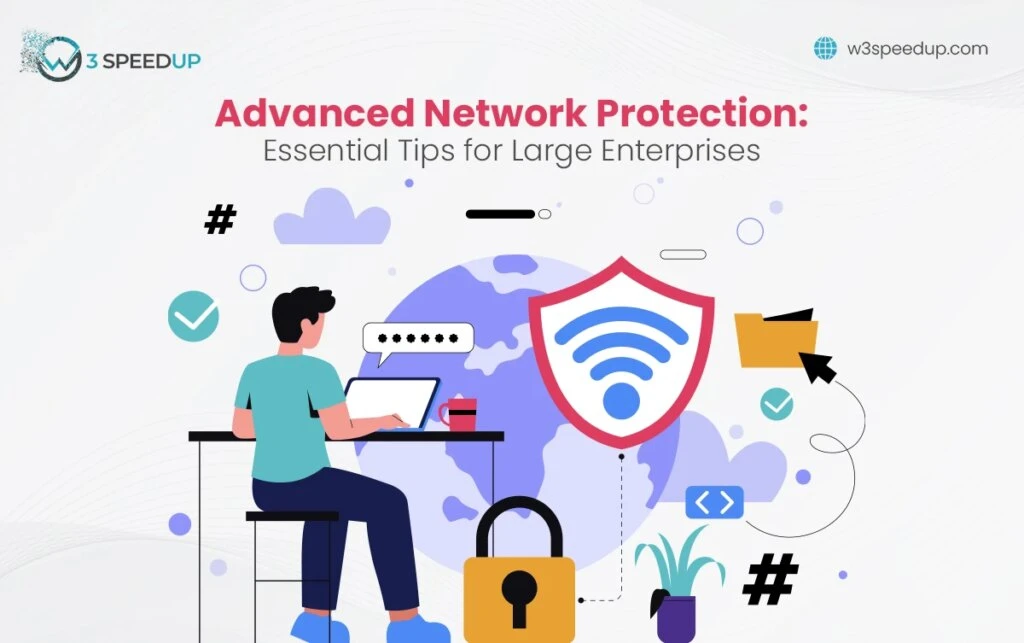In the age of digital transformation, large enterprises face a heightened risk of cyber threats that can compromise sensitive data, disrupt business operations, and damage reputations. As cyber threats grow more sophisticated, it is imperative for organizations to invest in advanced network protection. This blog will delve into the crucial elements that large enterprises need to consider when bolstering their network security.
Key Considerations for Large Enterprises Investing in Advanced Network Protection
 Navigating the Modern Cyber Threat Landscape
Navigating the Modern Cyber Threat Landscape
To effectively invest in network protection, enterprises must first understand the complexities of today’s cyber threat landscape. Cyber threats are evolving, and traditional security measures are often insufficient to tackle modern challenges. Key threats include:
- Ransomware: Malicious software that encrypts critical data and demands payment for its release.
- Phishing: Fraudulent attempts to acquire sensitive information by pretending to be a trustworthy source.
- DDoS Attacks: Distributed Denial of Service attacks that overwhelm systems, causing service disruptions.
- Insider Threats: Security breaches originating from within the organization, whether through malicious intent or inadvertent errors.
Understanding these threats is essential for designing an effective network protection strategy. The SonicWall NSa Series provides advanced network security features, such as intrusion prevention and real-time threat detection, making it a valuable tool for enhancing enterprise network protection.
 Core Elements of Advanced Network Protection
Core Elements of Advanced Network Protection
Investing in advanced network protection involves implementing several critical components to safeguard against sophisticated threats:
01. Next-Generation Firewalls (NGFWs):
Next-Generation Firewalls surpass traditional firewalls by integrating advanced features like intrusion prevention systems (IPS), deep packet inspection, and application awareness. These capabilities allow NGFWs to identify and block advanced threats that older firewalls might miss, providing a more robust defense.
02. Intrusion Detection and Prevention Systems (IDPS):
IDPS solutions are vital for monitoring network traffic and identifying suspicious activities. They provide real-time detection and automated responses to potential threats, effectively preventing unauthorized access and reducing the impact of security incidents.
03. Endpoint Protection and Response (EPR):
Endpoints like computers, mobile devices, and IoT devices are common targets for cyber-attacks. EPR solutions provide continuous monitoring, threat detection, and response capabilities for these endpoints, protecting them from malware and other cyber threats.
04. Network Segmentation:
Network segmentation entails dividing a network into smaller, isolated segments to contain and limit the impact of potential attacks. By isolating sensitive data and critical systems, enterprises can contain breaches more effectively and make it more challenging for attackers to access broader network areas.
05. Zero Trust Architecture:
The Zero Trust model is based on the principle of “never trust, always verify.” It mandates that every access request be rigorously authenticated and authorized, regardless of whether the user is inside or outside the network perimeter. Implementing Zero Trust architecture reduces the risk of unauthorized access and mitigates insider threats.
06. Security Information and Event Management (SIEM):
SIEM systems consolidate and analyze data from multiple network sources to identify and address security incidents. By providing real-time insights and alerts, SIEM solutions help enterprises address potential threats swiftly and strengthen their overall security.
 The Necessity of Ongoing Security Assessments
The Necessity of Ongoing Security Assessments
Investing in advanced network protection is an ongoing endeavor. Regular security assessments, such as penetration testing and vulnerability scanning, are crucial for identifying and addressing potential weaknesses in the network. These assessments should be part of a continuous improvement process, where security measures are regularly reviewed and updated in response to new threats.
 Building a Security-Conscious Culture
Building a Security-Conscious Culture
Even with cutting-edge technology, human factors remain a significant vulnerability. Employee training and fostering a security-conscious culture are critical for minimizing risk. Regular training on recognizing phishing attempts, maintaining strong passwords, and adhering to security protocols can significantly reduce the likelihood of successful attacks.
Creating a culture of security awareness ensures that all employees understand their role in protecting the organization and are vigilant against potential threats.
 Budgeting for Advanced Network Protection
Budgeting for Advanced Network Protection
Effective network protection requires a substantial investment, and budgeting for these measures can be challenging for large enterprises. However, the financial impact of a security breach—such as downtime, reputational damage, and regulatory penalties—often far exceeds the costs of preventive measures.
When budgeting for network protection, consider both the initial investment in security solutions and the ongoing costs of maintenance, updates, and training. Scalable, cloud-based security solutions can help manage expenses while providing the flexibility to adapt to evolving threats.
Conclusion
For large enterprises, investing in advanced network protection is a critical and absolutely crucial component of a robust cybersecurity strategy. By implementing Next-Generation Firewalls, Intrusion Detection and Prevention Systems, Endpoint Protection, and Zero Trust Architecture, organizations can enhance their defenses against a range of sophisticated threats.
Additionally, regular security assessments, employee training, and strategic budgeting are essential for maintaining a strong security posture. In a rapidly evolving threat landscape, a proactive and comprehensive approach to network protection is the best way to safeguard data, ensure operational continuity, and protect organizational reputation.
 Christmas Mega Sale – Enjoy Up to 50% OFF on Every Plan!
Christmas Mega Sale – Enjoy Up to 50% OFF on Every Plan! 


